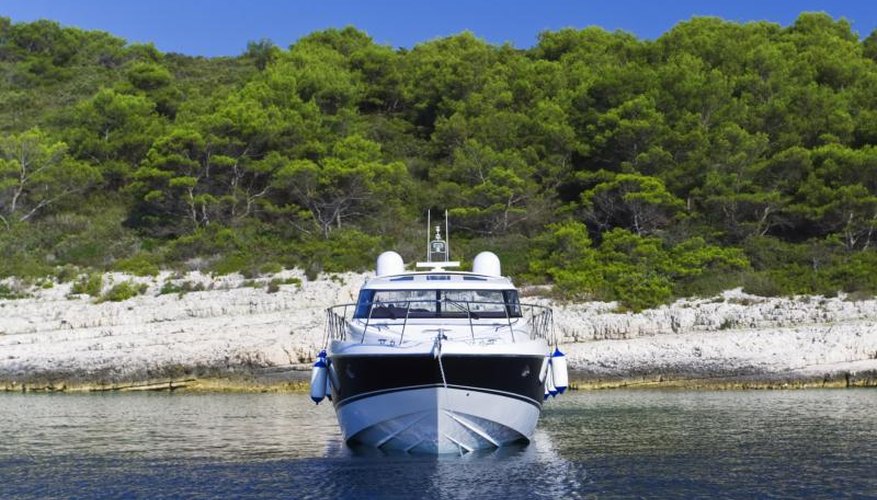
What boaters often think of as "new style" anchors -- rather than the anchor seen at the bow of sailing ships in every pirate movie -- the slip ring anchor is an attempt to solve a problem that's persisted ever since anchors were designed to dig into the sea floor: how to retrieve the anchor, once it's stuck in the bottom.
Design Theory
The slip ring anchor's design is based on the theory that, if the anchor chain can slide (slip) to the head of the anchor where the flukes are located when the captain wishes to dislodge the anchor from the bottom, retrieval of the anchor from the seabed is easier, since the application of the force from the anchor winch is mechanically "above" the flukes, rather than at a right angle to them.
Features
Modern slip ring anchors have angular, sharply pointed flukes, the blades that bury themselves in the seabed when the anchor is deployed. Characterized by a slot in the shank that allows the anchor ring, the attachment point for the anchor chain, to slide from the top to the bottom of the shank -- where the flukes hold the anchor steady in the seabed -- the slip ring anchor is readily recognizable.
Functionality
The slip ring anchor should be used as a secondary anchor or a temporary "short stay" anchor only. A slip ring anchor can dislodge itself from the sea bottom by the unintended application of force on the head of the anchor. Because the slip ring function of the anchor has no mechanical restraint to prevent the slip ring from moving accidentally, the slip ring may slide forward upon deployment and the anchor embed itself in the sea bottom in the "removal" posture. Slip ring anchors should not be used as a vessel's primary anchor except in cases of emergency.
Prevention/Solution
While the slip ring anchor may release itself from the seabed accidentally as the result of wave action or the movement of the vessel because of winds, currents or tidal currents, or even while sinking to the bottom to hold the vessel in place, a plastic wire tie -- inserted through the last link of the anchor chain and a hole drilled at the top of the anchor's shank through which the anchor ring slips -- provides a small degree of security against the anchor ring's movement to the head of the anchor.
Shallow Water Anchoring
Slip ring anchors, because of their light weight -- 5 to 9 pounds -- are best used in shallow waters, near coast lines. As noted, they are suitable for anchoring at "short stay," where the anchor line is minimally deployed and nearly straight up and down, rather than use with a full anchor rode -- five to seven times the depth of the water. This, and their easy release and retrieval characteristics make them quite suitable for light vessels used for recreational fishing, where regular movement may be expected.
References
- Chapman Piloting & Seamanship; Elbert S. Maloney
Writer Bio
Will Charpentier is a writer who specializes in boating and maritime subjects. A retired ship captain, Charpentier holds a doctorate in applied ocean science and engineering. He is also a certified marine technician and the author of a popular text on writing local history.



